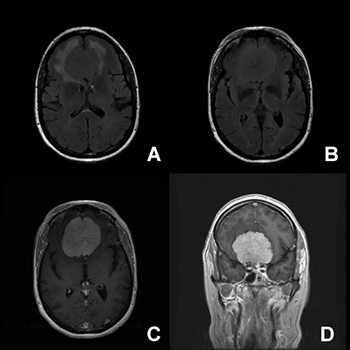Keywords
meningioma, Subacute Parkinson’s disease
Abstract
Secondary Parkinson’s disease or subacute Parkinson’s may occur after stroke, drug overdose carbon monoxide or manganese toxicity, and rarely owing to a brain tumor. Loss of dopaminergic neurons in the substansia negra pars compacta (SNc), or presence of the proteinaceous inclusions called Lewy bodies are thought to be the cause of Parkinson’s disease. Notwithstanding, in the past few decades, many case reports have been published describing Parkinson’s symptoms following either stroke, ischemia, toxicity, brain hemorrhage or rarely neoplasm.
References











